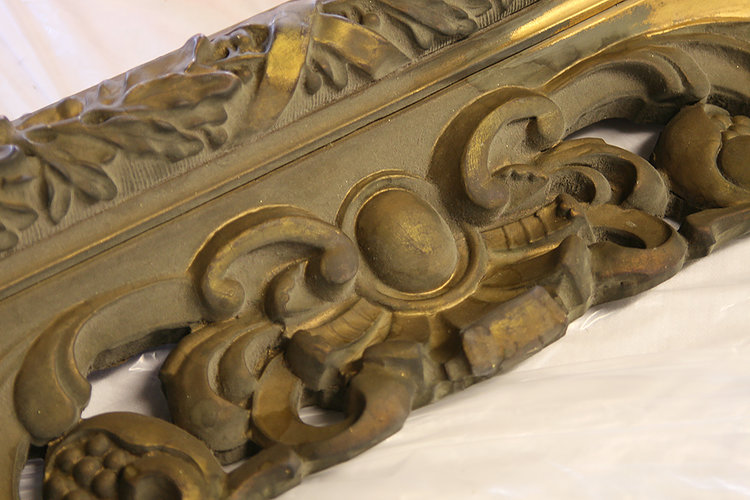Photo: Heavy bronze powder coating covering water gilded frame
Photo: Removing heavy bronze powder coating to uncover matte and burnished gold leaf and carving detail
Photo: Combination of accumulated dirt and bronzing on the top surface of the frame which was the most difficult to remove
Photo: Oxidized bronze paint at the top of the image in contrast with beautiful matte and burnished gold leaf detail
Conservation and restoration often means trying to fix previous incompetent and inappropriate repairs. These are often much more difficult to repair than the original repairs would have been due to the introduction of incompatible coatings or adhesives that are very difficult to separate and remove from the original material. Sometimes you get lucky as we did recently with a gilded frame for a local client.
The carved wood frame came in completely covered with a bronze powder coating that seemed fairly recent though badly oxidized and was a dark green/brown. It was obvious that there were some losses of gesso on two of the corners but the rest of the carving seemed to be intact. Testing showed that the binder of the coating was nitrous- cellulose lacquer that broke down quickly with the introduction of lacquer thinner.
Underneath the bronzing, the frame was water gilded with extensive burnishing that was in very good condition. As there was no oil gilding used, the cleaning was fairly easy though it took a fair amount of time and it was extremely tedious. After cleaning, the only real damage that was visible, was the two outer corners that obviously had a previous gesso damage that was poorly repaired. It appears that in trying to cover these two small areas of damage, the entire frame was coated with bronzing.
Economics did not allow for proper re-gliding of the two corners. By recoating just the damaged areas with non-tarnishing mica powders, we were able to blend it in with the original water gilding. The original water gilding was given a new coating of nitro-cellulose lacquer. The frame’s original surface has now been 98 % recovered from a coating that should have never been applied.





